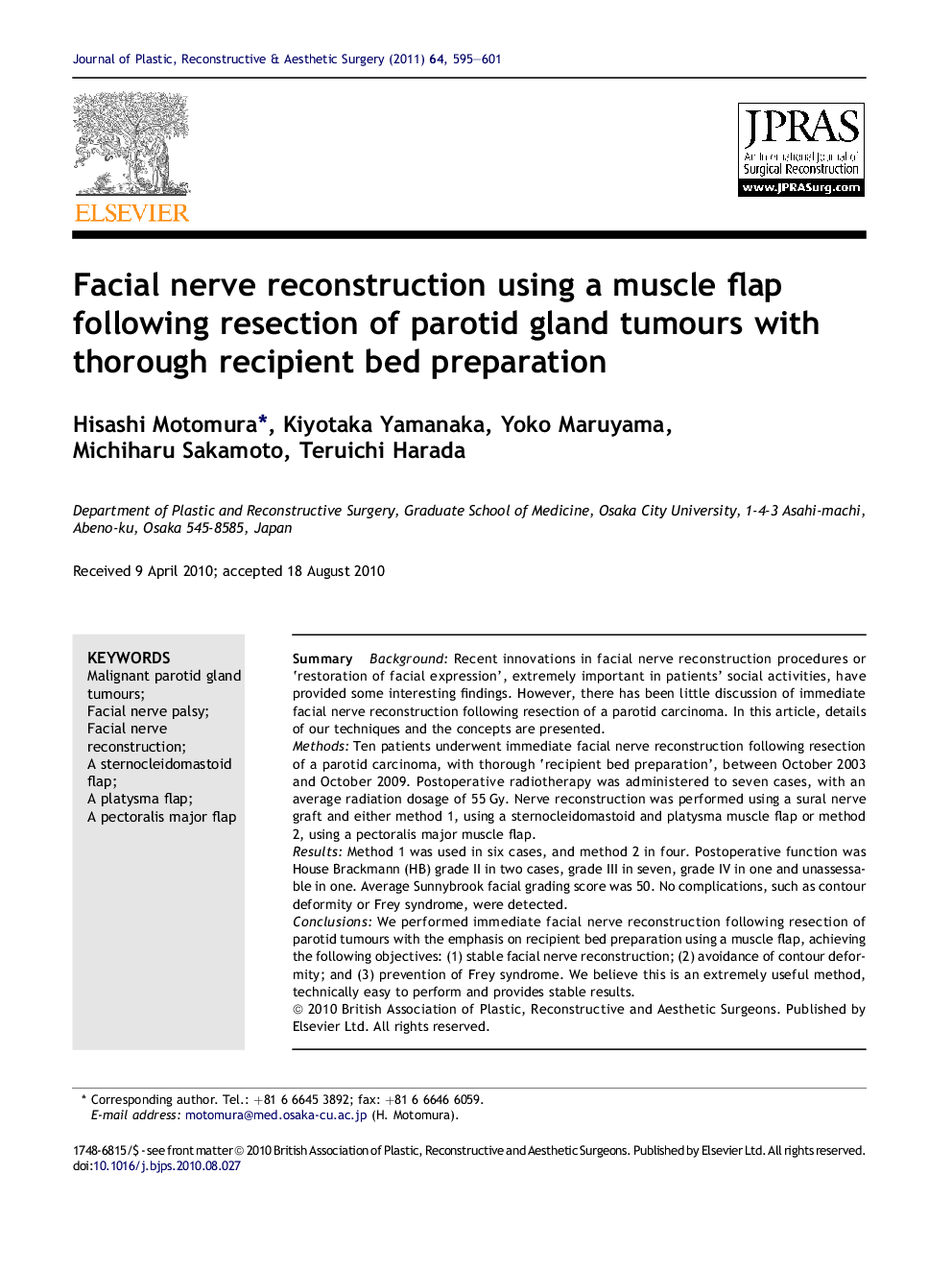| Article ID | Journal | Published Year | Pages | File Type |
|---|---|---|---|---|
| 4120849 | Journal of Plastic, Reconstructive & Aesthetic Surgery | 2011 | 7 Pages |
SummaryBackgroundRecent innovations in facial nerve reconstruction procedures or ‘restoration of facial expression’, extremely important in patients’ social activities, have provided some interesting findings. However, there has been little discussion of immediate facial nerve reconstruction following resection of a parotid carcinoma. In this article, details of our techniques and the concepts are presented.MethodsTen patients underwent immediate facial nerve reconstruction following resection of a parotid carcinoma, with thorough ‘recipient bed preparation’, between October 2003 and October 2009. Postoperative radiotherapy was administered to seven cases, with an average radiation dosage of 55 Gy. Nerve reconstruction was performed using a sural nerve graft and either method 1, using a sternocleidomastoid and platysma muscle flap or method 2, using a pectoralis major muscle flap.ResultsMethod 1 was used in six cases, and method 2 in four. Postoperative function was House Brackmann (HB) grade II in two cases, grade III in seven, grade IV in one and unassessable in one. Average Sunnybrook facial grading score was 50. No complications, such as contour deformity or Frey syndrome, were detected.ConclusionsWe performed immediate facial nerve reconstruction following resection of parotid tumours with the emphasis on recipient bed preparation using a muscle flap, achieving the following objectives: (1) stable facial nerve reconstruction; (2) avoidance of contour deformity; and (3) prevention of Frey syndrome. We believe this is an extremely useful method, technically easy to perform and provides stable results.
